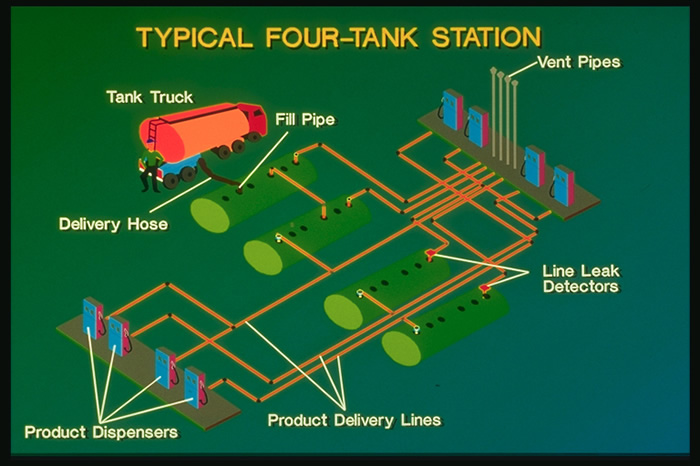Plans and Specifications
& for New UST/AST
To ensure new tank systems and equipment upgrades are installed according to state regulations and meet Department of Agriculture and Natural Resources (DANR) requirements, plans and specifications must be submitted to the Inspection, Compliance & Remediation Program for review and approval at least 30 days before the tank system is installed or upgraded. If the tank systems meet state standards as described in ARSD Chapter 74:56:01 for underground storage tank systems and ARSD Chapter 74:56:03 for aboveground storage tank systems, the facility owner should receive an approval letter within 30 days. If insufficient information is presented DANR will request submittal of additional information.
At a minimum, plans and specifications for new or upgraded Underground Storage Tank Systems must address corrosion prevention, overfill prevention, spill prevention, and leak detection. The plans must include all information relevant to show the tank system is in compliance with state rules and must include a site map and other figures showing the layout of tanks and piping. Most tank installers will submit plans to DANR for you. You should be aware that other state, federal, and local agencies, including state and local fire prevention authorities, may also need to review the plans. DANR will do periodic inspections of installations. If the work is not being done in accordance with the approved plans and specifications, the work may be halted until the site owner and installer agree to complete the installation as approved.
The plans and specifications for Aboveground Storage Tank Systems must address compliance with applicable sections of ARSD Chapter 74:56:03, including performance standards, overfill control, secondary containment, and release detection. . Documentation of adequate corrosion protection must be provided for all tanks and underground product lines. The plans must include all information relevant to show the tank system is in compliance with state rules and must include a site map and other figures showing the layout of tanks and piping.
Under DANR requirements, secondary containment must be designed to contain 110% of the largest tank volume. It must also have an impermeability of 10-6 cm/sec and have a method to control storm water. Secondary containment structures may be concrete, native material such as clay, or manufactured liners. Regardless of the material used for construction, the containment must be properly maintained including but not limited to removal of all vegetation and the repair of all cracks.
If you have any further questions, please contact Kayla Fawcett, Justin Allen, Marshall Brown, or Bailey McTigue in Pierre at (605) 773-3296, or Scott Bickler in Sioux Falls at (605) 362-3500 or in Rapid City contact Zachary Burggraff at (605) 394-2229 or E-mail.
Risk to Public and Private Wells
The South Dakota Department of Environment and Natural Resources has developed a comprehensive guidance document on how to evaluate risk to public and private wells from a petroleum release site. The guidance document also clarifies the Tier 2 risk based assessment and Tier 3 requirements at the aquifer sites including the wellhead protection areas.
The Tier 3 modeling can be done at release sites where Tier 2 risk based assessment has been done and identified the presence of public or private wells. For details check out the guidance document
